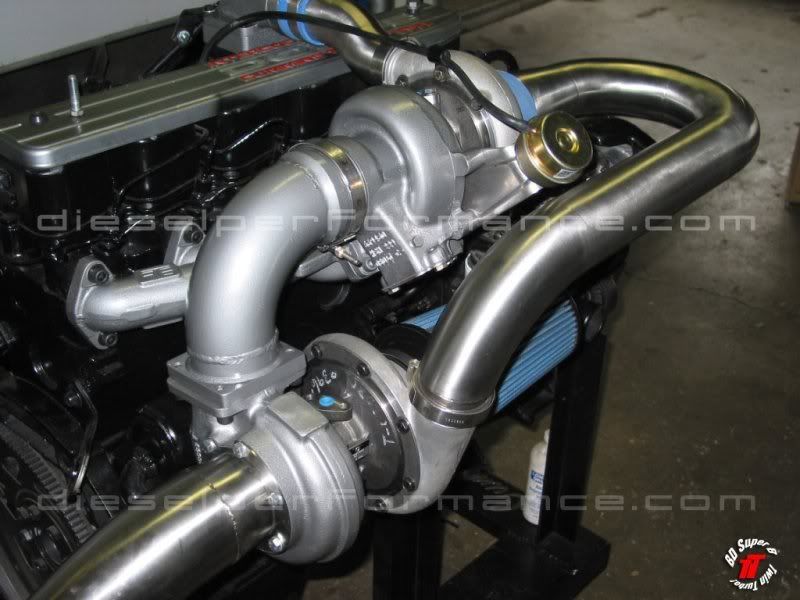

Anyone got any experience or tried this, got me thinking after watching the Lancia Delta S2 vids (http://www.toyotagtturbo.com/forums/showthread.php?t=62673) which is supercharged and turbocharged. This is one turbocharger (small) feeding another (bigger). Would make for an awesome power delivery and a very broad powerband.
Looks easy enough to fabricate, i was thinking ct9 from 2500rpm, then like a td06 or summit comin' in 5500rpm obviously with a built motor revving up high or would a properly set up big single turbo be better with like nos or anti lag?
